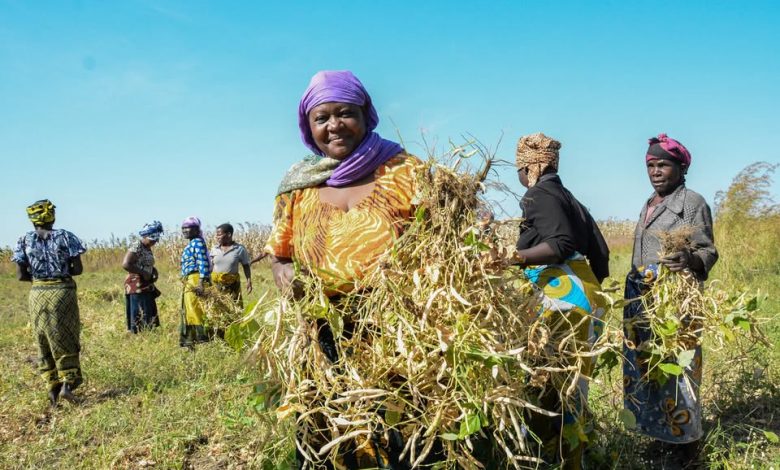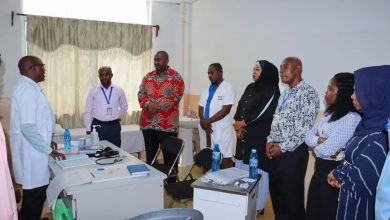Tanzanian farmers endure a threat of the climate change

DODOMA: FARMERS in Dodoma, Singida, Morogoro, and Manyara regions are facing growing challenges in sustaining agricultural production due to the adverse effects of recurrent droughts, erratic rainfall, and rising temperatures.
According to the various studies conducted across the country, these changes have continued to weaken crop productivity and threaten the growth of the agricultural sector, which remains the backbone of Tanzania’s economy.
A report by the World Food Programme (WFP) indicates that agriculture contributes about 29 per cent of the national GDP and employs over 70 per cent of the rural population. “Irregular rainfall patterns and frequent droughts are leading to declining crop yields,” the report states.
In Dodoma Region, recent research revealed that over 90 per cent of farmers are aware of climate change, yet most lack the capacity to adapt their farming methods. “Many farmers understand the problem but do not have the resources to use drought-resistant seeds or adopt modern irrigation systems,” the study noted.
According to the Tanzania Meteorological Authority (TMA), northern regions have also experienced a temperature increase of between 0.5 and 1.2 degrees Celsius, which has negatively affected key crops such as maize, rice, and beans.
“I have lost hope,” said a resident of Makuyuni in Manyara Region, who lost his maize harvest last season. “The entire dry season has destroyed my crops, and now hunger is approaching my household,” he noted.
The government, through its Nationally Determined Contributions (NDC) plan, has recognized climate change as a major development challenge, noting that “Tanzania is highly vulnerable to the adverse impacts of climate change.”
However, implementation of mitigation and adaptation strategies remains constrained by limited budgets, inadequate international funding, and poor irrigation infrastructure.
Studies further show that climate change has increased both droughts and floods, which destroy farms, damage agricultural infrastructure, and cause soil erosion. Rainy seasons have also become increasingly unpredictable—sometimes arriving early, sometimes late—shortening the growing period for staple crops such as maize, rice, and sorghum.
Research findings indicate that a 2°C rise in temperature could reduce maize yields by over 13 per cent by 2050, posing a serious threat to national food security.
Additionally, higher temperatures and erratic rainfall have intensified pest and disease outbreaks, while recurring droughts and water shortages continue to put pressure on the country’s already scarce water resources. This situation not only threatens irrigation farming but also affects hydropower generation and rural livelihoods dependent on agriculture.
Environmental and agricultural experts warn that without significant investment in technology, farmer education, and extension services, the situation could worsen—deepening poverty and fueling conflicts between farmers and pastoralists over dwindling land and pasture resources.
They stress that Tanzania must take decisive action to transform its agricultural production systems and build the resilience of smallholder farmers. A key step is strengthening climate-smart agriculture, which includes using drought-tolerant seeds, early-maturing crops, and modern irrigation technologies such as drip and sprinkler systems.
According to TMA and the NDC (2021) report, investing in efficient water-use technologies could boost crop productivity by more than 20 per cent in arid regions. The government is also urged to enhance extension services and farmer education, as studies show that while many farmers recognize climate change, few know the right adaptation practices.
Through continuous training, community radio programmes, and farmer learning centres, climate information can be widely disseminated across rural communities. Experts also recommend improving irrigation and water storage infrastructure by constructing small dams, harvesting rainwater, and drilling shallow wells to sustain crop production during dry seasons.
ALSO READ: Tanzania hosts global AI forum to tackle climate change
Research institutions such as the Tanzania Agricultural Research Institute (TARI) and Sokoine University of Agriculture (SUA) should be prioritized in developing crop varieties and technologies resistant to heat, pests, and water shortages. The IPCC (2022) report underscores that local research and technological innovation are essential tools for African countries to build agricultural resilience.
However, experts emphasize that implementing these projects requires sufficient funding. The government is therefore urged to allocate special budgets for climate adaptation programmes and attract international financing through mechanisms such as the Green Climate Fund (GCF) and Adaptation Fund, as outlined in the NDC (2021).
They also highlight the need to strengthen collaboration between farmers and pastoralists, particularly in the use of land and water resources, to reduce resource-based conflicts. Moreover, improving access to accurate weather information via mobile phones, radio, and digital platforms is critical for timely agricultural planning.
According to TMA (2023), timely access to weather information is one of the key tools for improving productivity and minimizing crop losses. Experts say that if these measures are implemented effectively, Tanzania will be better positioned to safeguard its agricultural sector, ensure food security, and reduce poverty in rural communities.





